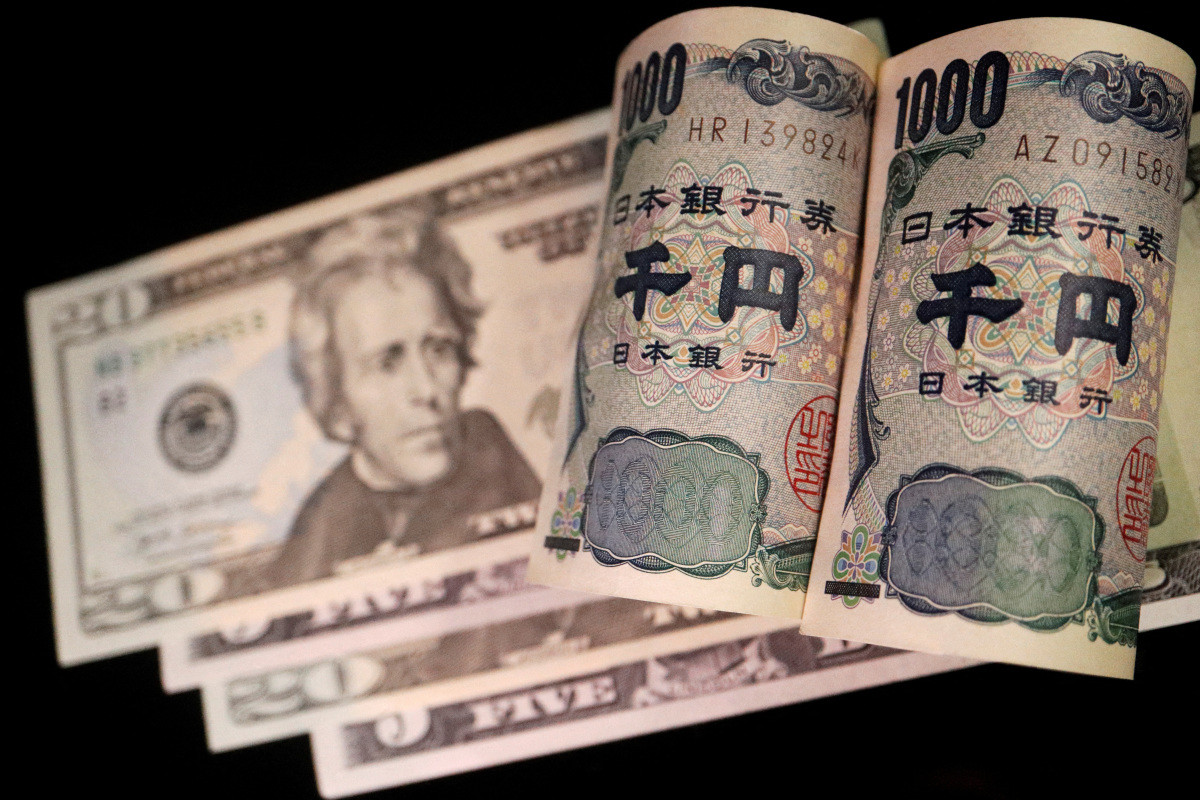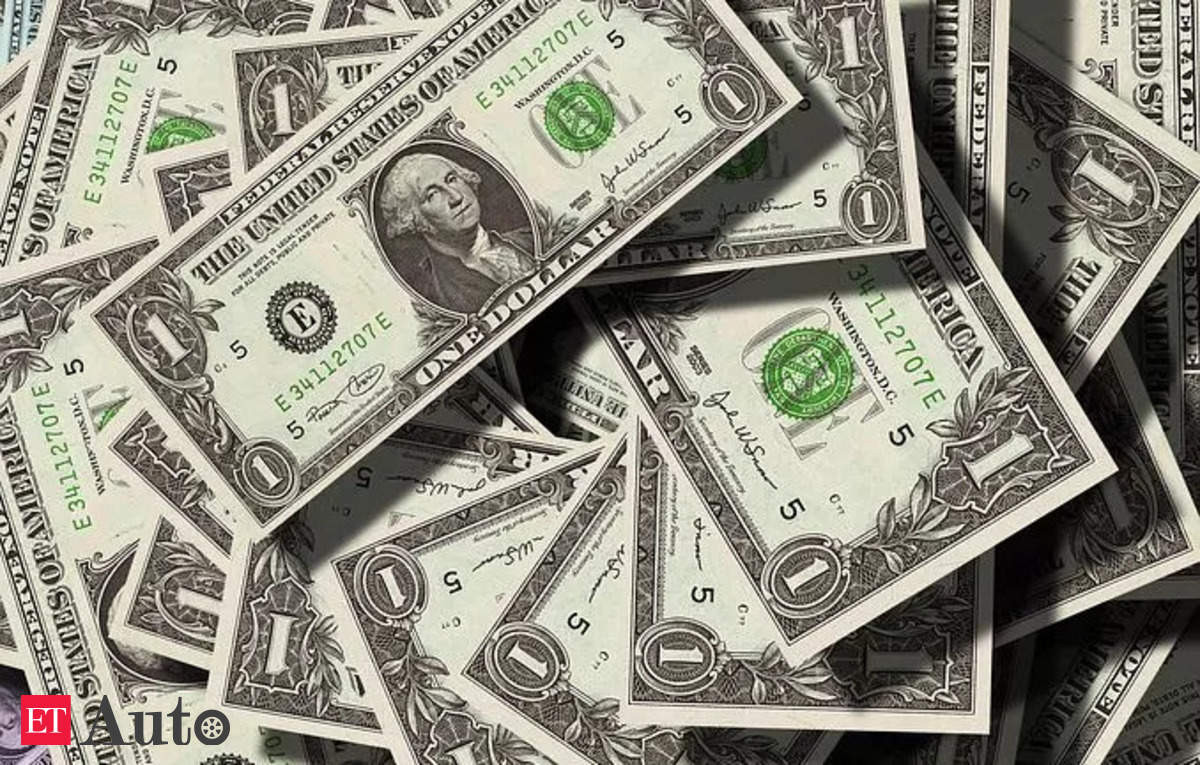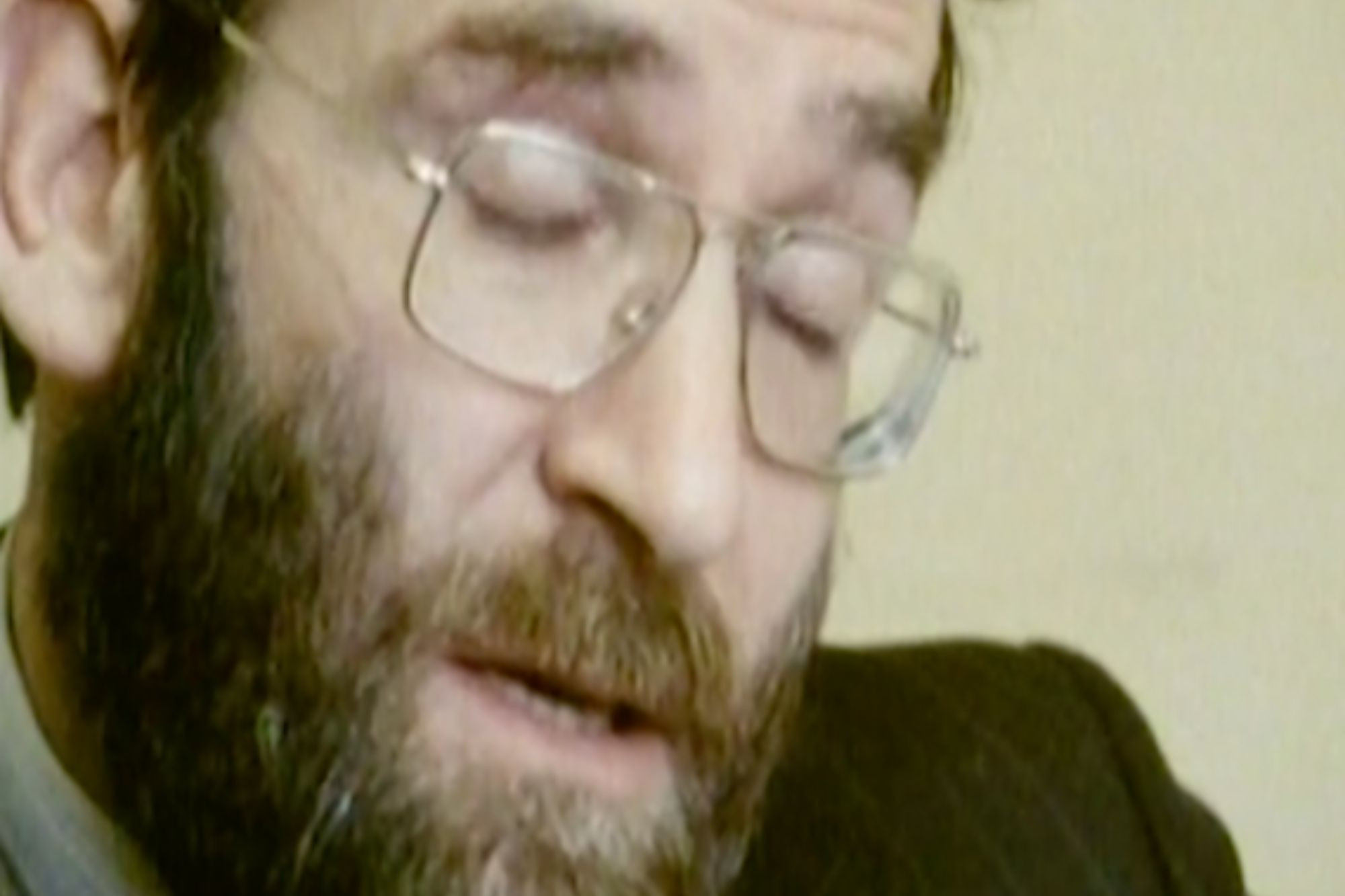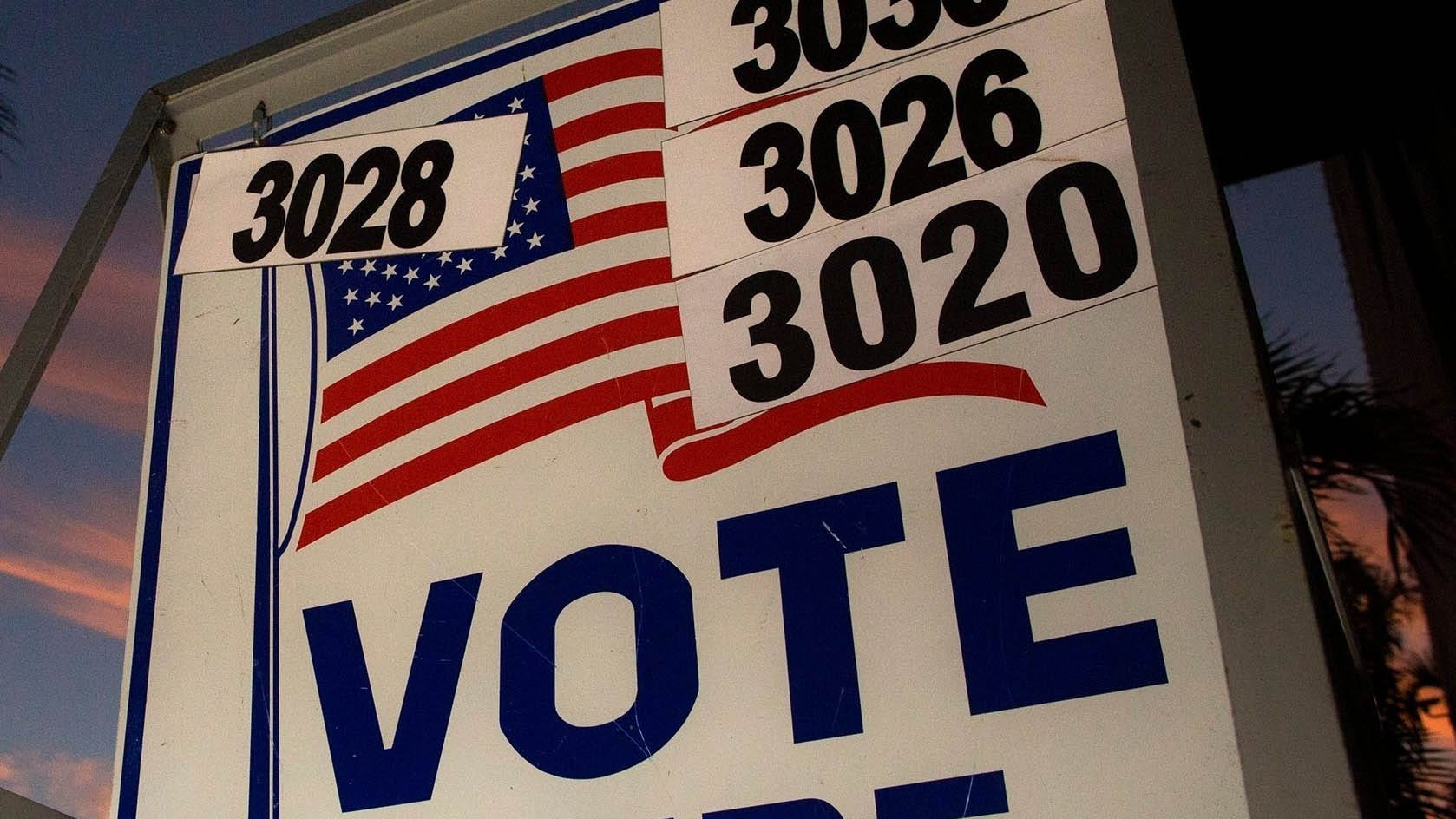The U.S. dollar fell to a more than one-year low versus the yen on Monday, as expectations increased that the Federal Reserve could deliver a supersized cut to interest rates later this week. The Fed had been widely expected to announce at least a 25-basis-point cut to interest rates at the conclusion of its Sept. 17-18 meeting. But reports by the Wall Street Journal and Financial Times last week sparked speculation among traders that the central bank could deliver a more aggressive 50 bp cut. Futures markets are pricing in a 61% chance of a 50 bp cut, up from around 15% last week. “There’s only really one story today and that is a continuation of what we saw last week: after the CPI, the market was comfortable with a 25 basis point rate hike but many people suspect the Fed planted a story to put 50 basis points back on the table,” said Marc Chandler, chief market strategist at Bannockburn Global Forex in New York. “The markets have responded accordingly. And in fact, they’re continuing to adjust.” The dollar traded as low as 139.58 yen in Asia hours. That represented a further drop from the 140.285 end-of-December low struck on Friday to levels last seen in July 2023. It was last down 0.10% at 140.695 yen. The dollar index, which measures the currency against six others including the euro, yen and pound, was down 0.31% to 100.70. U.S. Treasury yields have been falling in the run-up to the highly anticipated Fed meeting, particularly as odds stack up for a half-point rate cut. Benchmark 10-year yields are down 30 basis points in about two weeks. Two-year yields, more closely linked to monetary policy expectations, were around 3.571% and down from roughly 3.94% two weeks ago. Investors are also looking to the Bank of Japan's interest rate decision on Friday, when it is expected to keep its short-term policy rate target steady at 0.25%, having raised rates twice already this year. BOJ board members have indicated they are keen to see rates higher, and the narrowing gap between rates in Japan and other major currencies has spurred the yen higher and caused billions of dollars worth of yen-funded carry trades to be unwound. Sterling rose 0.58% to $1.3200. The euro was up 0.47% at $1.1128. The European Central Bank cut interest rates by 25 bps last week, but ECB President Christine Lagarde dampened expectations for another reduction in borrowing costs next month. The ECB should almost certainly wait until December before cutting interest rates again to be certain it is not making a policy mistake in easing too quickly, ECB Governing Council member Peter Kazimir said on Monday. The Bank of England is expected to hold its key interest rate at 5% on Thursday, after kicking off its easing with a 25-bp reduction in August. Futures markets were pricing in around a 38% chance of a quarter-point rate cut on Thursday, versus a 20% chance on Friday. ## The Fed's Next Move The U.S. dollar plunged to the 139 yen zone Monday in Asian trading, hitting its lowest level in over a year, amid growing expectations that the Federal Reserve will cut interest rates by half a point later this month. Late last week, The Wall Street Journal reported that the U.S. central bank is likely to reduce rates by 0.5 percentage point from the current 5.25-5.50 percent, the highest level in 23 years, in a bid to prevent a sharp slowdown in the world’s biggest economy. The U.S. currency slipped to the mid-139 yen zone, its lowest level since July 2023, in the run-up to the Fed’s two-day policy meeting from Tuesday. Japanese financial markets were closed Monday due to a national holiday, making trading thin across the board. The dollar was also pressured by remarks by Bank of Japan policy board members earlier this month that indicated a positive stance toward higher interest rates. The BOJ will hold a two-day policy meeting from Thursday. At 5 p.m., the dollar fetched 139.87-88 yen compared with 140.89-92 yen in Tokyo at 5 p.m. Friday. The euro was quoted at 155.47-49 yen against 156.29-33 in Tokyo late Friday afternoon. ## The BOJ's Rate Decision The BOJ, meanwhile, is expected to maintain its policy rate as it is eager to examine the impact of the latest rate hike against a backdrop of recent volatile financial market moves, people familiar with the matter said. But speculation is mounting that the interest rate gap between the United States and Japan will keep shrinking down the road, possibly prompting more market participants to buy back the yen by selling the dollar, dealers said. ## The Dollar's Recent Weakness The U.S. dollar fell on Friday to its lowest level in nearly nine months against the Japanese yen after media reports once again fueled speculation the Federal Reserve could deliver a super-sized 50-basis-point interest rate cut at its policy meeting next week. Analysts said reports by the Wall Street Journal and Financial Times late on Thursday saying a 50-bp rate reduction is still an option, and comments from a former Fed official arguing for an outsized cut, caused a shift in market expectations. The U.S. rate futures market has priced in a 51% probability of a 50-bp easing by the Fed at the conclusion of its two-day meeting on Wednesday, up from about 15% early on Thursday. Futures traders have also factored in 117 bps of cuts for 2024, up from 107 bps in the previous session. The media reports introduced the probability of a 50-bp cut back into the market after new inflation data had reinforced expectations of a 25-bp cut by the Fed, said Brad Bechtel, global head of FX at Jefferies in New York. “So you’re just seeing a little bit of an unwinding of those positions that were looking for 25 basis points.” In late afternoon trading, the dollar was down 0.66% to 140.855 yen, after earlier dropping to 140.285, its lowest level since Dec. 28. On the week, it fell 1%. The euro, meanwhile, rose 0.08% versus the greenback to $1.1083. The European Central Bank cut interest rates by 25 bps on Thursday, but ECB President Christine Lagarde dampened expectations for another reduction in borrowing costs next month. Gains in the euro have pushed the dollar index 0.08% lower to 101.08. “That increase in probabilities of potentially more dovish Fed policy drove the dollar lower and pushed a lot of those other currencies higher, said John Velis, FX and macro strategist at BNY Mellon in Boston. The dollar trimmed losses after data showed U.S. consumer sentiment improved in September amid easing inflation. The University of Michigan’s preliminary reading on the overall index of consumer sentiment came in at 69.0 this month, compared with a final reading of 67.9 in August. Economists polled by Reuters had forecast a preliminary reading of 68.5. U.S. economic data this week appeared to support the case for a typical 25-bp cut next week, with the measure of consumer price inflation that strips out volatile food and energy prices rising more than expected in August. But former New York Fed President Bill Dudley on Friday added to the speculation about a 50-bp Fed rate cut, saying there was a strong case for such a move and that rates were currently 150-200 basis points above the so-called neutral rate for the U.S. economy, where policy is neither restrictive nor accommodative. “Why don’t you just get started?,” he said. The euro “is eyeing $1.11 again after the combined support of a not-dovish-enough European Central Bank and rising dovish bets on the Fed,” said Francesco Pesole, a currency strategist at ING. Sterling edged slightly lower 0.01% to $1.31235, weakening after reaching near its highest level in a week. The Bank of England is expected to hold its key interest rate at 5% next week after kicking off its easing with a 25-bp reduction in August. The dollar fell 0.38% against the Swiss franc to 0.84780 francs. Investors were also looking to the Bank of Japan's interest rate decision next Friday, when it is expected to keep its short-term policy rate target steady at 0.25%. BOJ board member Naoki Tamura said on Thursday the central bank must raise rates to at least 1% as soon as the second half of the next fiscal year, but added that it would likely do so slowly and in several stages. “The BOJ is perceived to be going in the different direction than the Fed - in 180-degree opposite direction,” Velis said, adding that whether and when the BOJ raises rates remains an open question. ## The Big Picture The recent moves in the dollar and the yen reflect a shift in market expectations about the direction of monetary policy in the United States and Japan. The Fed is expected to cut interest rates in the coming months, while the BOJ is expected to continue to raise rates. This divergence in monetary policy is likely to continue to put pressure on the dollar and support the yen in the near term. The dollar's weakness against the yen is also a sign of the growing risk aversion in global markets. Investors are increasingly worried about the global economic outlook, and they are seeking safe-haven assets such as the yen. It remains to be seen whether the dollar's recent weakness is a temporary blip or the start of a longer-term trend. However, the recent moves in the currency markets suggest that the dollar is facing significant headwinds in the near term.
Maria Garcia
Editor
Passionate editor with a focus on business news.


















